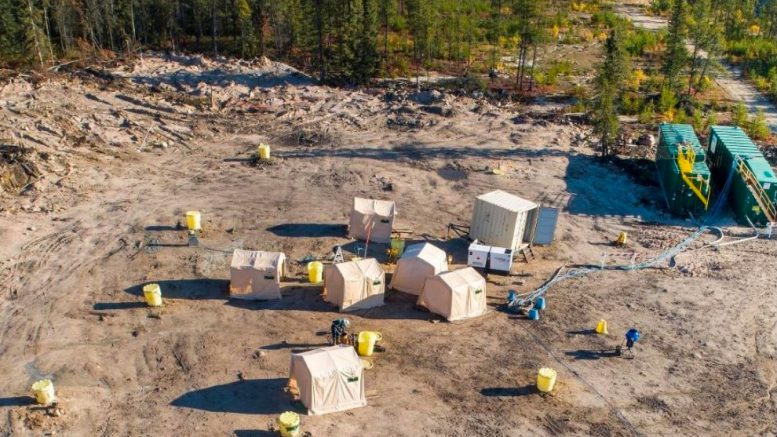Denison Mines (TSX: DML; NYSE: DNN) has filed its environmental impact statement (EIS) with the Saskatchewan Ministry of Environment and the Canadian Nuclear Safety Commission, reaching another milestone for its Wheeler River uranium project in northern Saskatchewan.
The EIS outlines the company’s assessment of the potential effects (including applicable mitigation measures) of the proposed in-situ recovery (ISR) uranium mine and processing plant at Wheeler River, Denison said in a news release on Wednesday. Included in the filing are several years of collected baseline environmental data, technical assessments, and extensive engagement and consultation with Indigenous and non-Indigenous interested parties.
“Our assessments indicate that the project has fewer residual effects remaining after mitigation when compared to conventional open pit or underground uranium mining and milling operations,” said Denison president and CEO David Cates in the release. “We are proud of the outcomes outlined in the EIS and the role that Denison is playing in re-shaping the uranium mining industry in Saskatchewan.”
The news about the EIS comes just over one week after the Toronto-headquartered company announced positive results from its ISR field tests at the Phoenix deposit. Denison called the results “history in the making.” The ISR tests were among the first ever conducted in the Athabasca Basin.
Denison lauds Wheeler River as the largest undeveloped uranium project in the eastern portion of the Athabasca Basin region. It has indicated resources of 132.1 million lb. uranium oxide (U3O8) in 1.8 million tonnes grading 3.3% U3O8 plus inferred resources of 3.0 million lb. U3O8 in 82,000 tonnes averaging 1.7% U3O8. The resources are contained in the Phoenix and Gryphon deposits, discovered by Denison in 2008 and 2014, respectively.
The project is a joint venture of Denison (95% and operator) and JCU (Canada) Exploration. A prefeasibility study was completed for Wheeler River in 2018, considering the potential economic merits of developing the Phoenix deposit as an ISR operation and the Gryphon deposit as a conventional underground mine. Taken together, the project is estimated to have mine production of 109.4 million pounds U3O8 over a 14-year life.
Denison shares were trading at $1.75 in Toronto on Wednesday afternoon, in a 52-week window of $1.18 and $2.64. It has a market cap of $1.4 billion.


Be the first to comment on "Denison in ‘milestone’ EIS submission for Wheeler River uranium project"